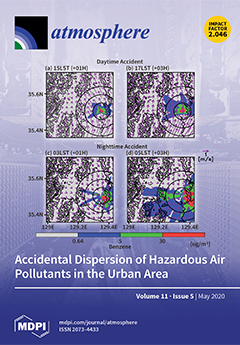This study presents features of airborne culturable bacteria and fungi from three different sites (Lanzhou; LZ; 1520 m ASL, Lhasa; LS; 3640 m ASL and Qomolangma; ZF; 4276 m ASL) representing urban (LZ and LS) and remote sites (ZF) over the Tibetan Plateau (TP). Total suspended particle (TSP) samples were collected with an air sampler (Laoying 2030, China) on a quartz filter. Community structures of bacteria and fungi were studied and compared among three different locations. The average levels of bacterial load in the outdoor air ranged from approximately 8.03 × 10
1 to 3.25 × 10
2 CFU m
–3 (Colony forming unit per m
3). However, the average levels of fungal loads ranged from approximately 3.88 × 10
0 to 1.55 × 10
1 CFU m
−3. Bacterial load was one magnitude higher at urban sites LZ (2.06 × 10
2–3.25 × 10
2 CFU m
−3) and LS (1.96 × 10
2–3.23 × 10
2 CFU m
−3) compared to remote sites ZF (8.03 × 10
1–9.54 × 10
1 CFU m
−3). Similarly, the maximum fungal load was observed in LZ (1.02 × 10
1–1.55 × 10
1 CFU m
−3) followed by LS (1.03 × 10
1–1.49 × 10
1 CFU m
−3) and ZF (3.88 × 10
0–6.26 × 10
0 CFU m
−3). However, the maximum microbial concentration was observed on the same day of the month, corresponding to a high dust storm in Lanzhou during the sampling period. The reported isolates were identified by phylogenetic analysis of 16S rRNA genes for bacteria and ITS sequences for fungi amplified from directly extracted DNA. Bacterial isolates were mostly associated with
Proteobacteria, Eurotiomycetes and Bacillus, whereas fungal isolates were mostly
Aspergillus and
Alternaria. Overall, this is a pioneer study that provides information about the airborne microbial concentration and composition of three sites over the TP region depending on environmental parameters. This study provided preliminary insight to carry out more advanced and targeted analyses of bioaerosol in the sites presented in the study.
Full article





